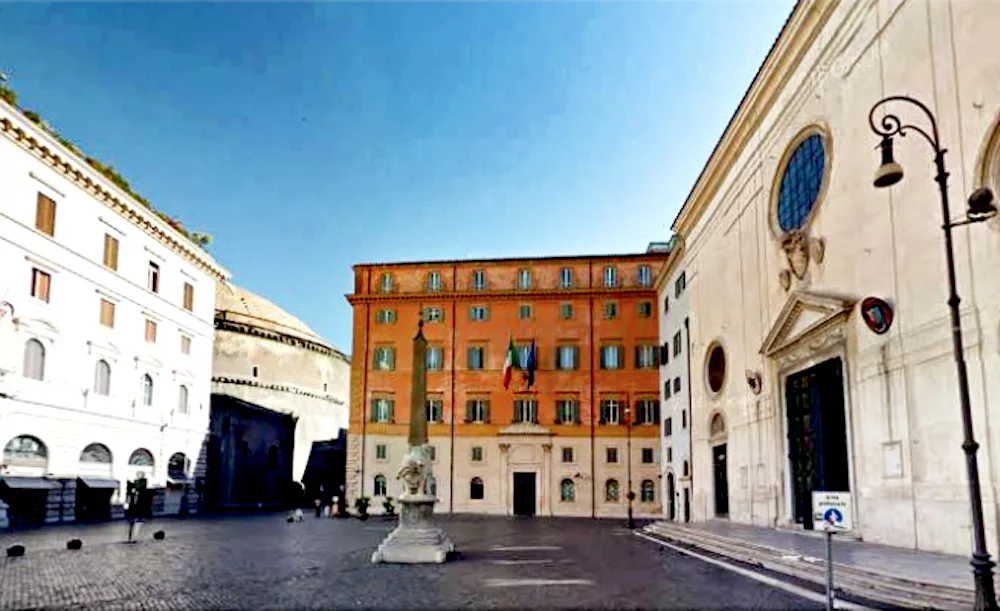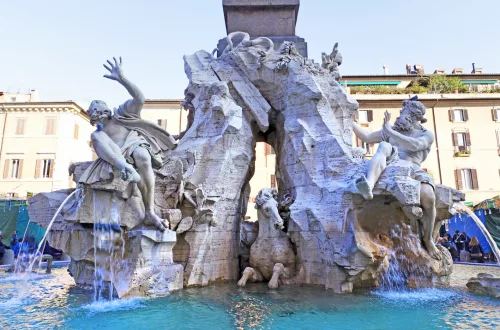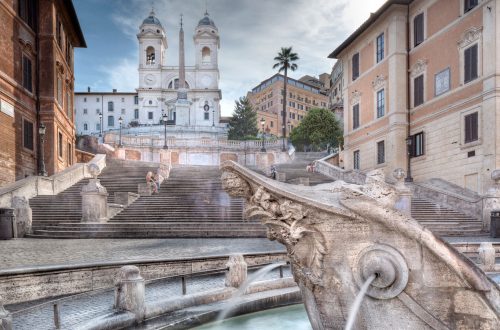
Piazza della Minerva
Piazza della Minerva: Rome’s Elegant Jewel of Art, History, and Quiet Charm
Tucked just steps away from the bustling Pantheon lies one of Rome’s most refined and underrated squares: Piazza della Minerva. While many travelers rush past on their way to more famous landmarks, those who pause here discover a perfectly balanced blend of Renaissance elegance, Baroque wit, and spiritual gravitas. This piazza is not just a scenic detour; it’s a living chapter of Rome’s layered history.
A Square with a Sacred Heart
Piazza della Minerva takes its name from an ancient Roman temple dedicated to Minerva, the goddess of wisdom, which once stood nearby. Although the temple no longer exists, its legacy survives in the square’s name and dignified atmosphere.
Dominating the piazza is the Basilica of Santa Maria sopra Minerva, one of the rare Gothic churches in Rome. Built atop the ruins of the ancient temple, its understated façade conceals a richly decorated interior featuring vibrant frescoes, intricate chapels, and artworks by Renaissance masters. Notably, it houses a striking statue of the risen Christ by Michelangelo and the tomb of the painter Fra Angelico, making it a significant site for both art lovers and spiritual pilgrims.
Bernini’s Playful Elephant: Wisdom with a Smile
Perhaps the most iconic feature of Piazza della Minerva is the charming and curious statue known as the Elephant and Obelisk. Designed by Gian Lorenzo Bernini in 1667, this whimsical sculpture depicts a small elephant carrying an ancient Egyptian obelisk on its back.
More than just a decorative monument, the statue is rich in symbolism. The elephant represents wisdom and strength, suggesting that true knowledge must be supported by a solid foundation. Bernini’s humorous touch is evident in the elephant’s slightly mischievous expression, which has led Romans to affectionately nickname it “Pulcino della Minerva” (the little chick of Minerva), despite its obvious size.
A Peaceful Refuge in Bustling Rome
Unlike larger, heavily trafficked piazzas, Piazza della Minerva offers a calmer, more contemplative experience. Its layout feels intimate and harmonious, bordered by historic buildings, charming cafés, and the gentle hum of conversation. The square invites you to linger — perhaps with an espresso in hand, and observe daily Roman life unfolding at an unhurried pace.
Students, locals, priests, tourists, and artists often share this space, creating a uniquely Roman blend of modern life and ancient tradition. The soft paving stones and refined architecture give the piazza an almost timeless quality, where centuries seem to coexist with ease.
A Hub of Intellectual and Spiritual History
Piazza della Minerva has long been associated with learning and theology. The nearby Dominican convent and church played a pivotal role in ecclesiastical history, hosting important theological debates and figures such as Saint Catherine of Siena. For centuries, this was a place where religion, philosophy, and art converged, a legacy still palpable today.
Why You Should Visit
Whether you’re a history enthusiast, architecture admirer, or casual wanderer, Piazza della Minerva offers something special:
-
Artistic intrigue through Bernini’s symbolic elephant
-
Spiritual heritage inside Santa Maria sopra Minerva
-
Photogenic charm without overwhelming crowds
-
A perfect pause between major Roman landmarks
It’s an ideal spot for quiet reflection, people-watching, or simply soaking in the understated elegance that defines this unique corner of Rome.
Final Thoughts
Piazza della Minerva may not shout for attention like the Colosseum or Trevi Fountain, but that’s precisely its allure. It whispers stories of wisdom, faith, and artistic brilliance to those willing to listen. In a city famous for its grandeur, this piazza stands as a graceful reminder that sometimes, the most beautiful places are the ones you discover unexpectedly.
Sponsored by Basilio 55 Rome
![]()



